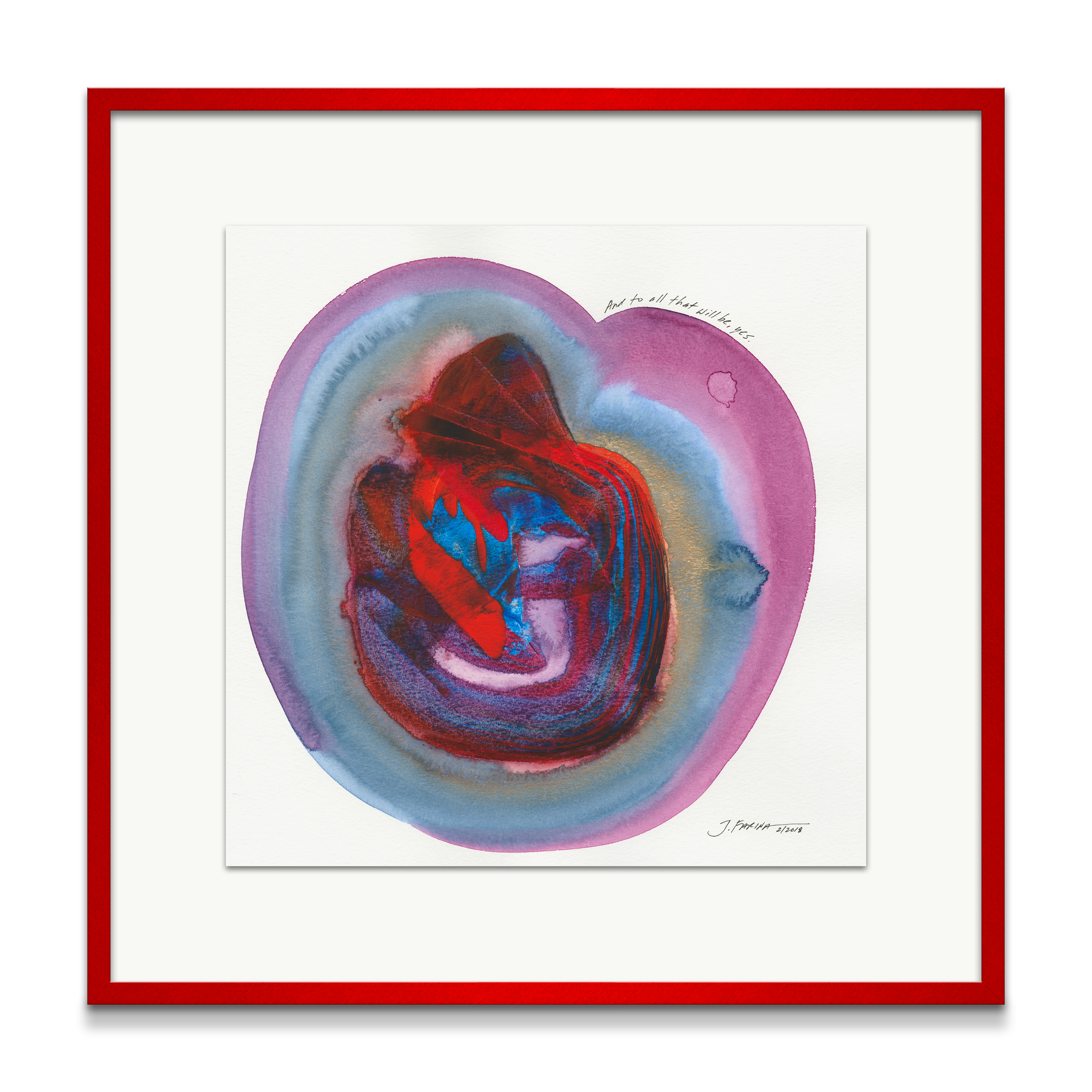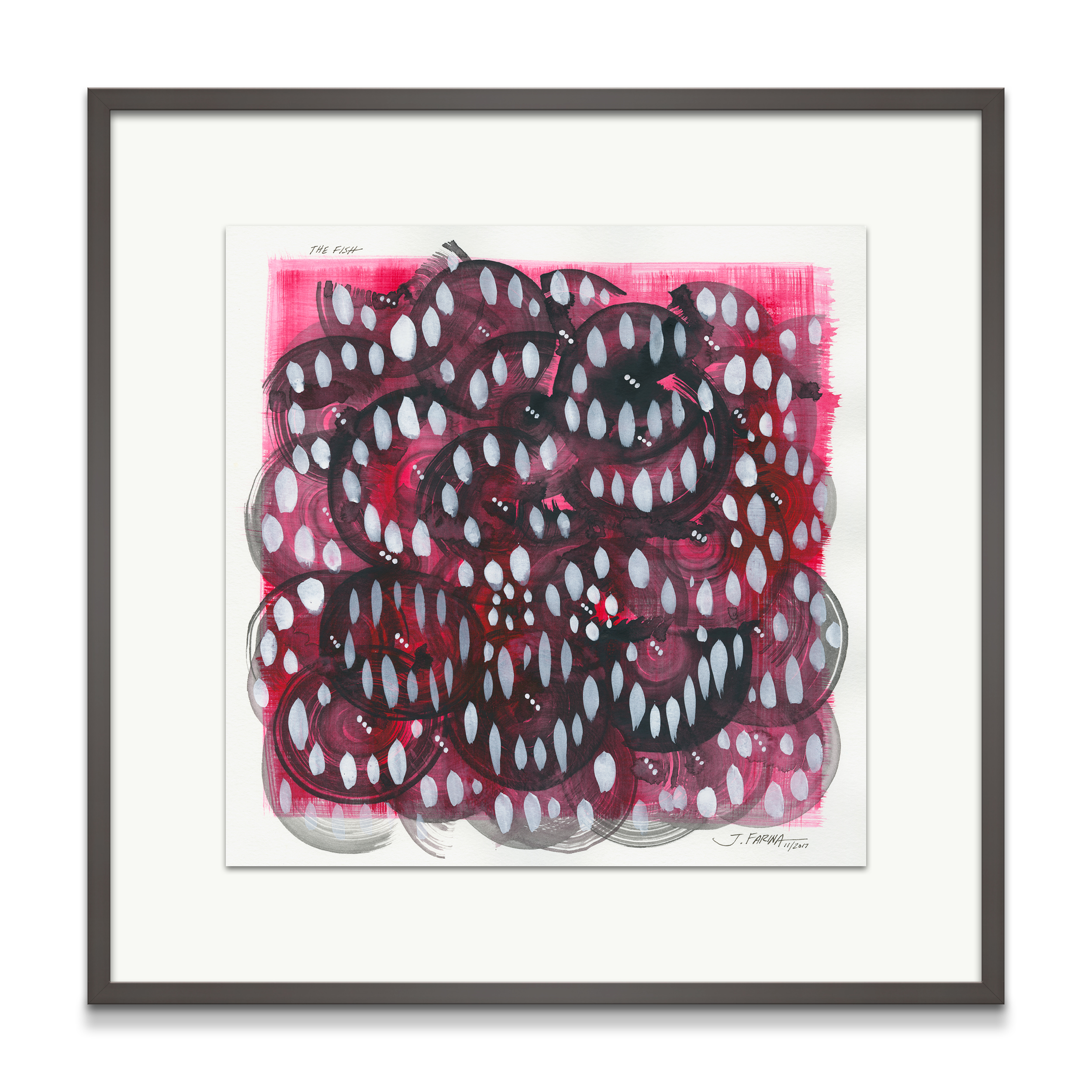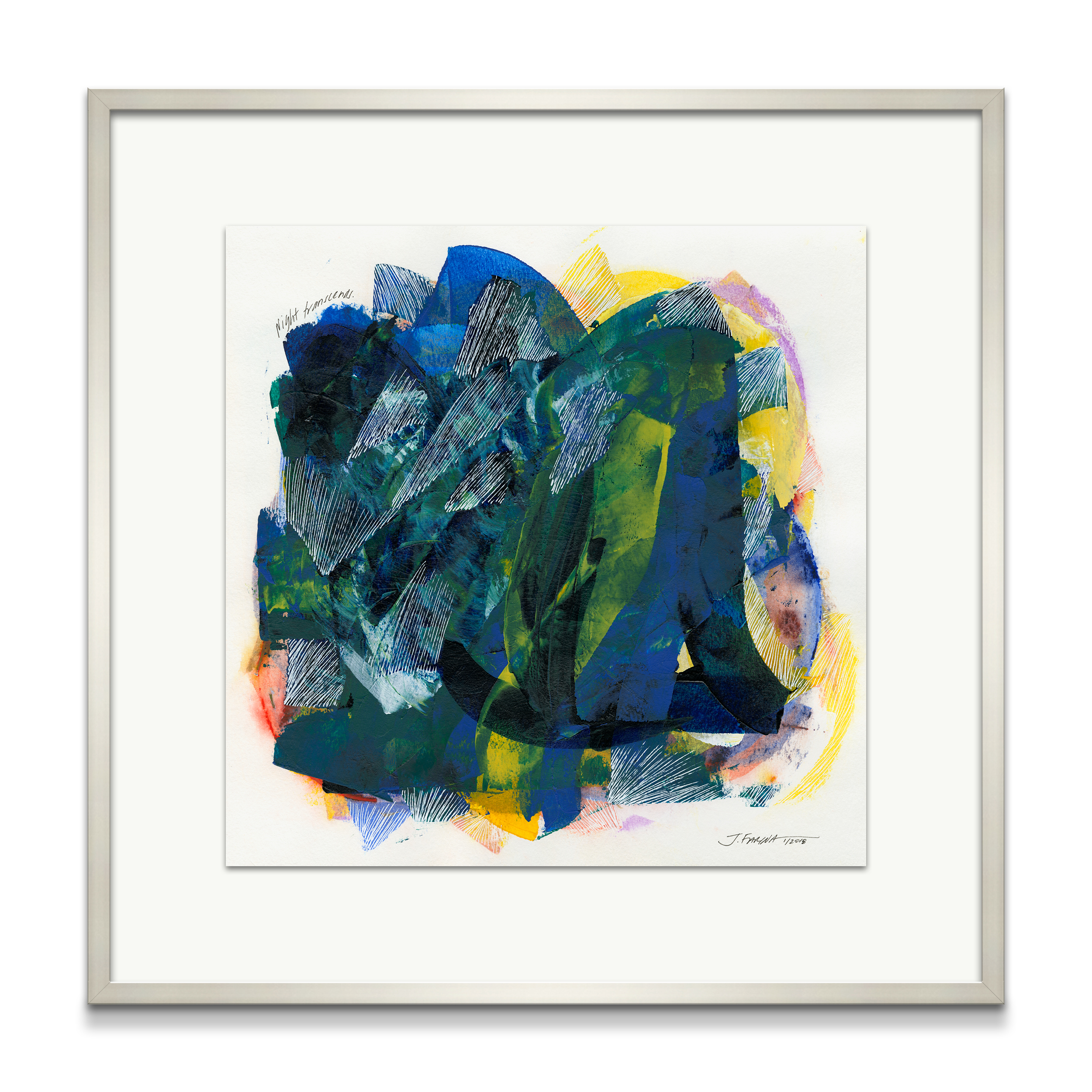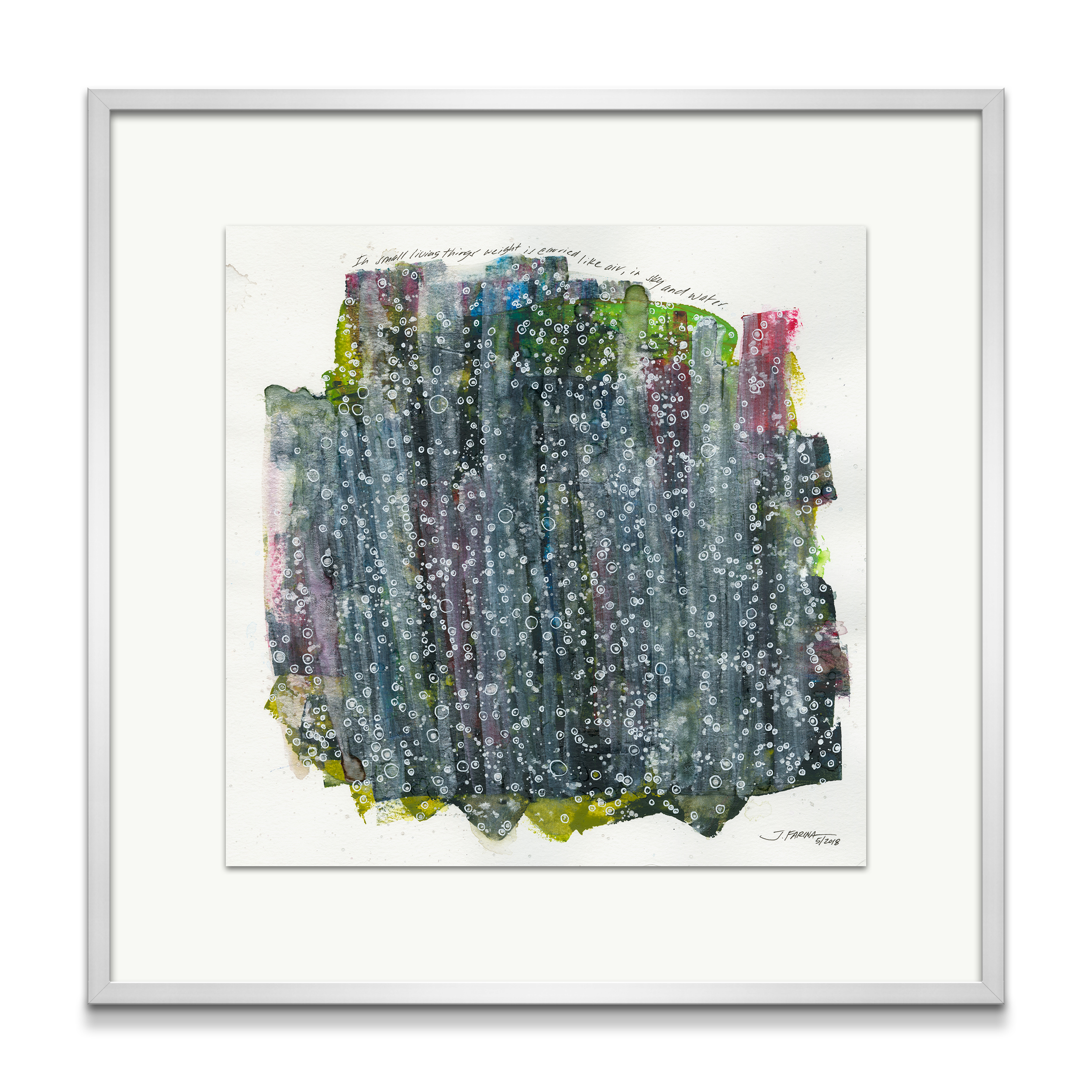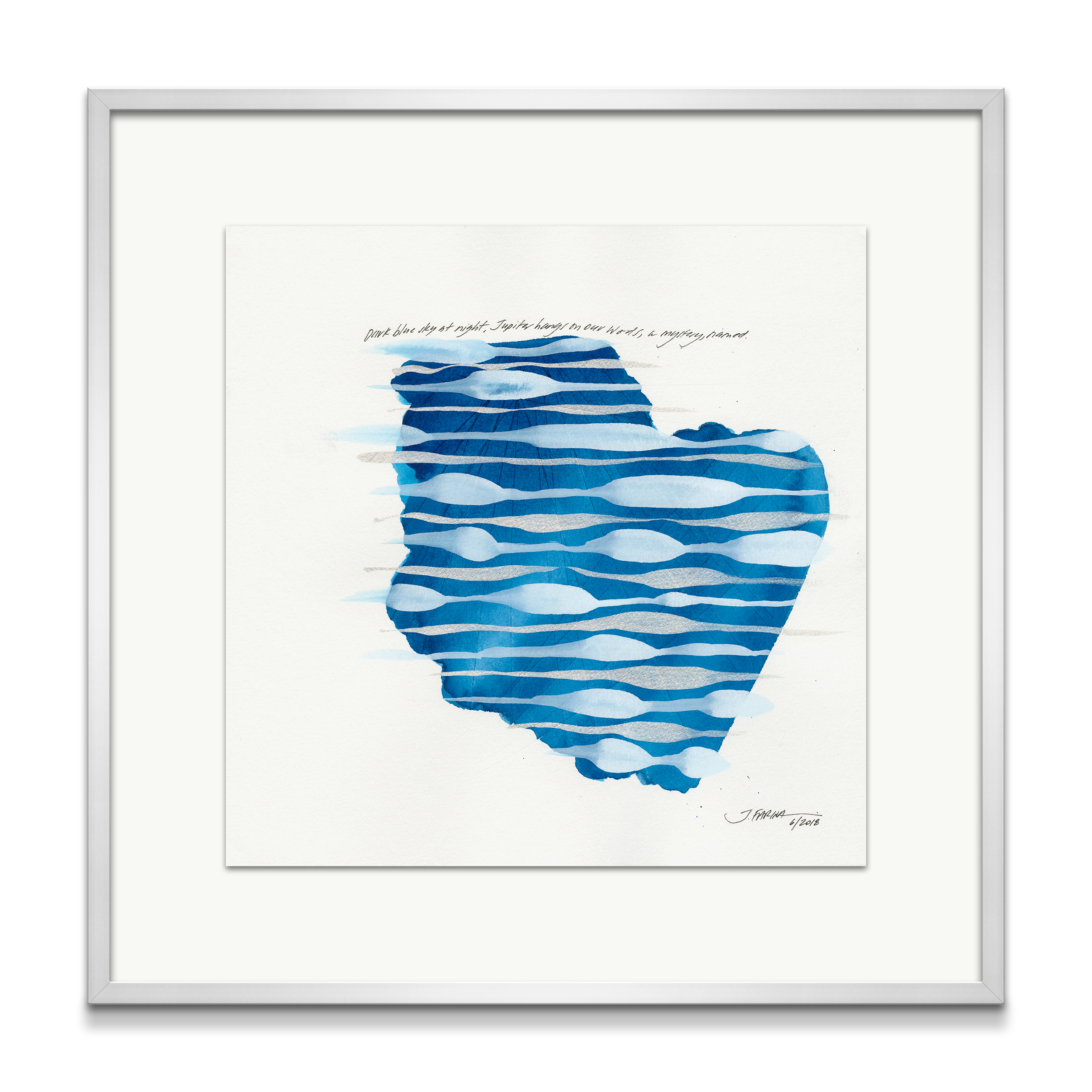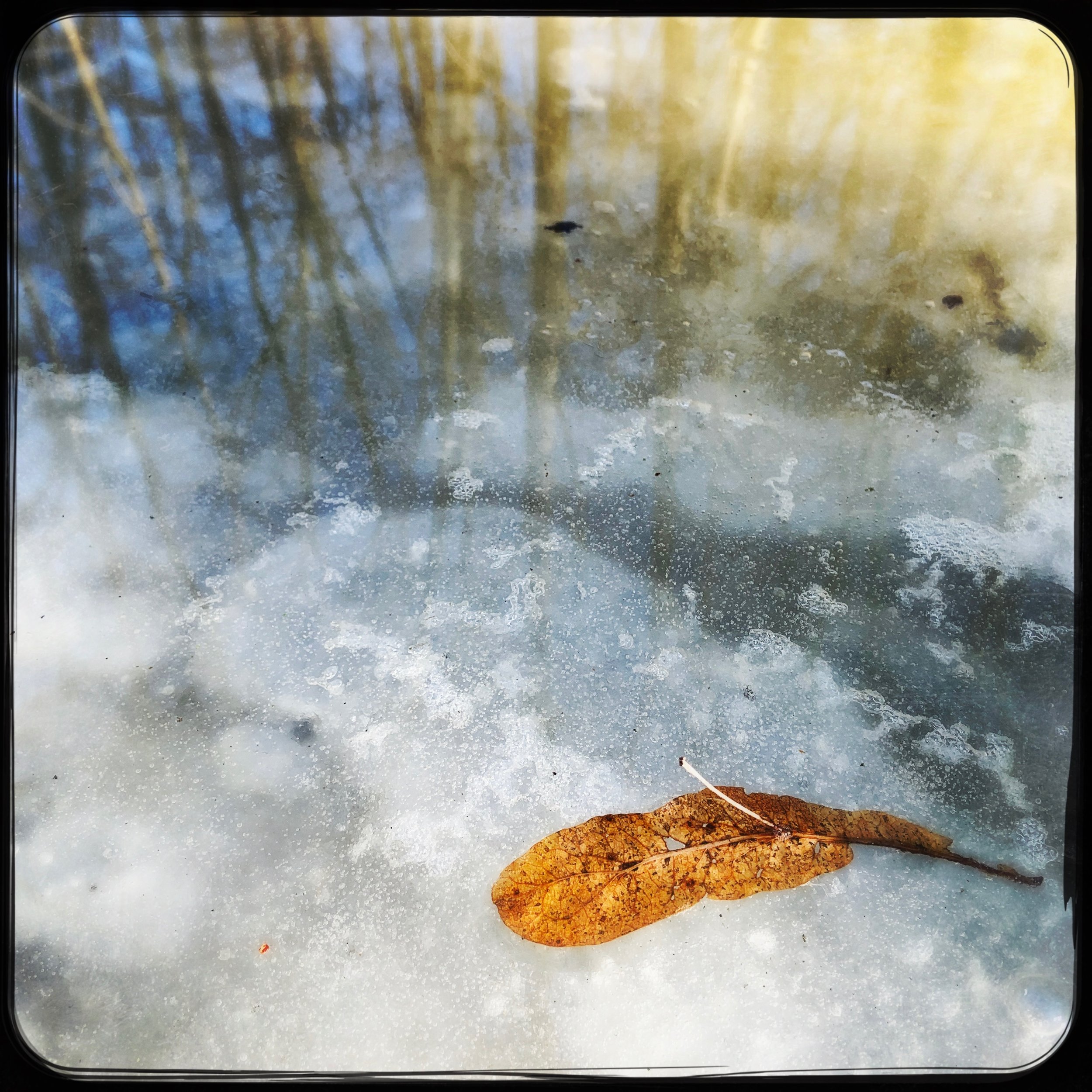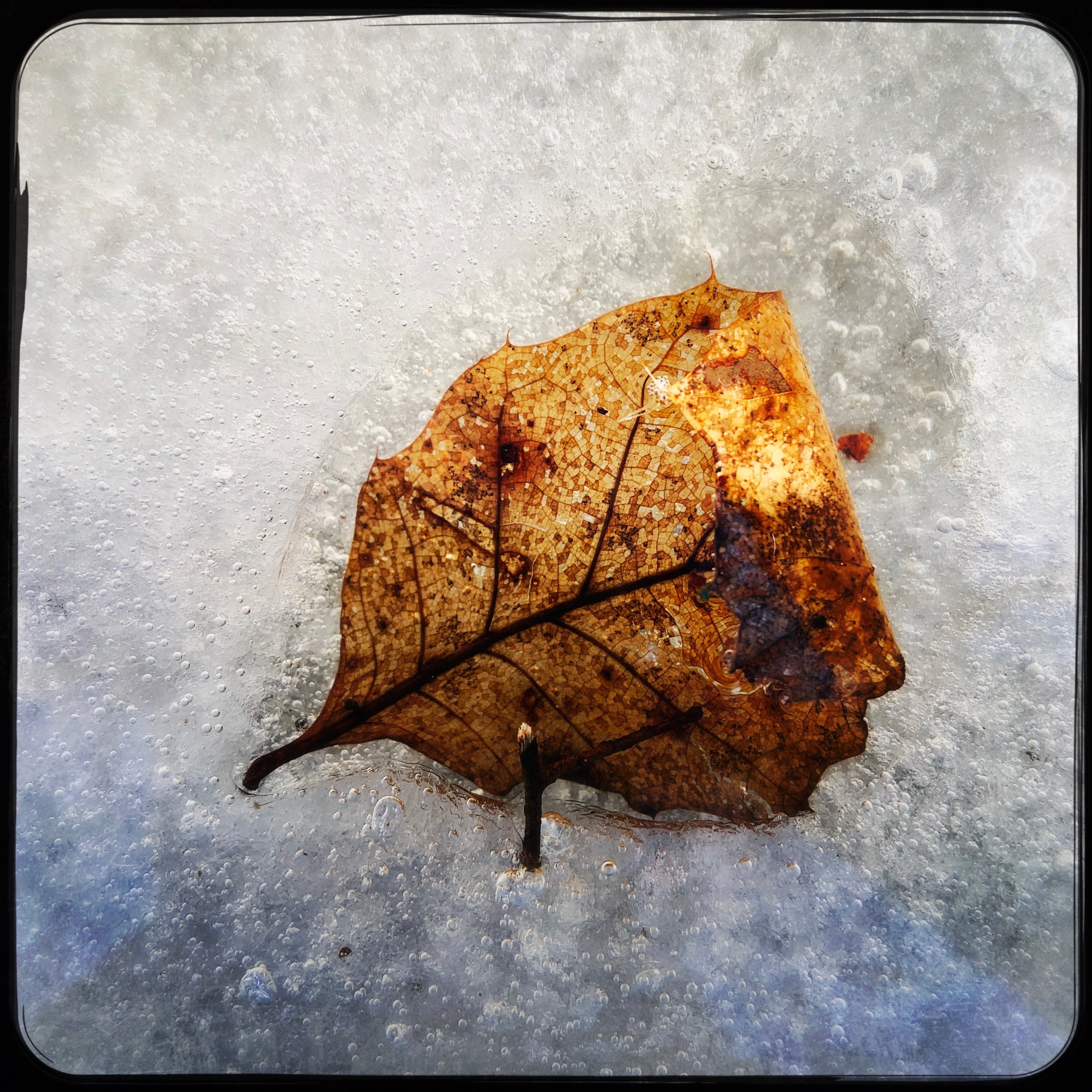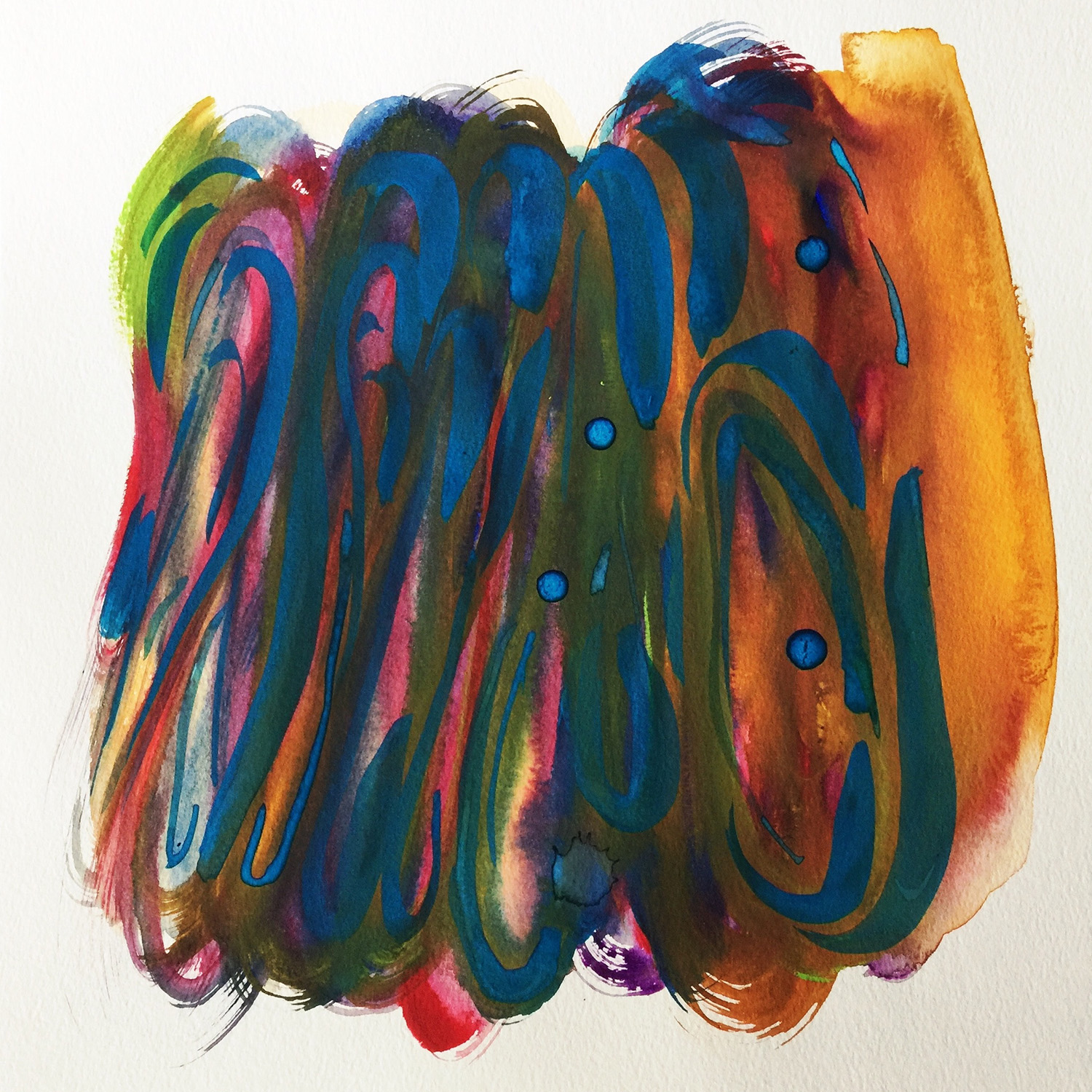A seemingly impossible task…
This painting came together over a few weeks. It started with the black line, kind of an automatic painting just for the sake of a putting down a nice line to see where it goes. Then I set it aside for a while. Next came that deep ultramarine in the center with a wash of lighter blue emanating from it. Again, I set it aside for a bit, not even sure which orientation felt right.
Then one day I laid the gold down in the same way—quickly and enjoying how the swirls fell together. It suddenly felt like an aerial view of a pond, land meeting water, caverns and canyons—and also suddenly a face. A surprise, but once I saw it, the orientation was decided. I set it aside again for a while longer, until a snowy Sunday and like a meditation I hand-dotted all of those specks with a white pen, then the light blue wash, then the white pen carving out that blue, then black pen finishing off the outer waves—like lapping water, or atmosphere, or sound. All of the sudden it was an otherworldly figure made out of an otherworld.
The name came to me thinking of a beautiful thin hardcover book I bought in the fall at the library used book sale for 50 cents: The Cambridge Star Atlas, by Wil Tirion. It has a table of contents that is deceptively simple: The Moon, The Monthly Sky Maps, The Star Charts, and The All-Sky Maps. Pages of bright blue maps of the stars, shown as dots, connected by lines forming constellations. Keys that identify single and double stars, open clusters, globular clusters, planetary nebulae, galaxies.. Like poetry.
I loved that someone mapped all of this and put it in this book…and that person is the All-Sky Map Maker.













